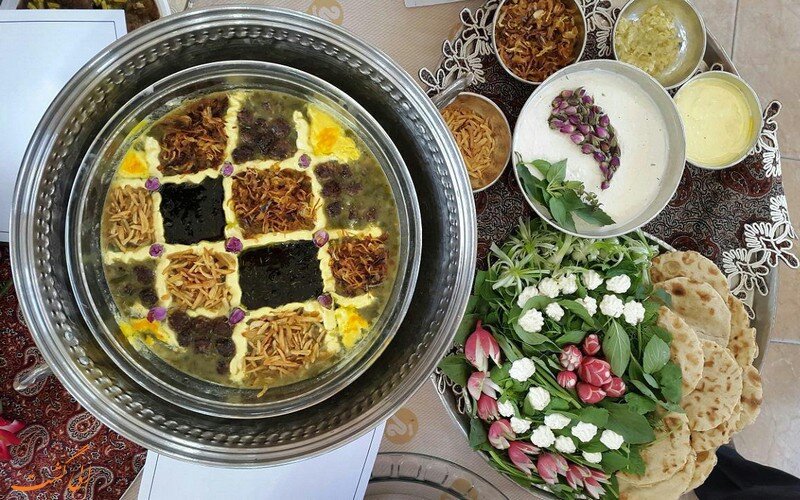Winners of thick soup festival announced

TEHRAN- On Friday evening, winners of the 15th national festival of Iranian Ash were honored at the closing ceremony of the event, dedicated to the thick Persian vegetable soup.
Mahsa Aliyari from Zanjan province and Farideh Salehi from Kermanshah shared the first award, Batul Naqdi from Ilam and Farzaneh Abdi from Zanjan shared the second award, CHTN reported on Saturday.
Zohreh Asadpur from Gilan and Robab Mohammadi from Zanjan shared the third award, and Mona Kazami from Kordestan received an honorable mention, the report said.
Iranian chefs Morteza Arefihakimi, Lida Samimi-Moqaddam, Shahrzad Ahmadi, and Seyyed Mehdi Hosseini constituted members of the jury for the four-day festival held in Zanjan.
A total of 120 stalls were set up by exhibitors from all Iranian provinces, the report added.
The traditional slow-cooked soup is typically made with a variety of ingredients but may include flat wheat noodles, turmeric, vegetables (broccoli, carrots, onion, celery, spinach), legumes (chickpeas, kidney beans), herbs (dill, mint, coriander, minced cilantro), and optional meat such as ground lamb, beef or chicken.
Depending on the type of Ash, it could contain different types of grain, legumes (chickpeas, black-eye beans, lentils), vegetables, tomato, herbs (parsley, spinach, dill, spring onion ends, coriander, dried mint), yogurt, onions, oil, meat, garlic, and spices, such as salt, pepper, turmeric, saffron, etc.
When it comes to Iran, food is also a delightful vehicle for discovering the ancient land that has long been situated at the crossroads of history.
A paradise for foodie travelers, Iran is where it’s not just food on the menu. Some believe that Iranian cuisine is itself a metaphor for the country: It’s savory, sweet, fragrant, and incredibly complex.
Iranian cuisine delicately combines characteristics and peculiarities of Near and West Asia, India and East Asia due to Iran’s checkered antiquity and the country's location as a hub of trade between East and West on the historic Silk Roads. Similarly, the Persians have influenced many cuisines as part of their once policy of expansion.
There are many secrets to know about the Persian kitchen. An example of those very special characteristics is the medicinal aspects of Persian cuisine.
Next time that you hear from an Iranian that some kind of food is Cold (Sard) or Warm (Garm) remember that they may be speaking about something other than the temperature of the food but with its influence on the body and soul - very comparable to some aspects of Chinese cuisine.
Rooted in traditional Persian medicine, these beliefs are still very popular even in educated Iranian families. The ancient theory states that only a balanced diet with proportions of both types of food keeps people physically and mentally healthy.
For instance, some types of food such as lamb meat, onion, wheat, dates, nuts, and grapes are Warm and others such as beef, yogurt, cheese, cucumber, fish, beans, and rice are Cold.
AM
Leave a Comment